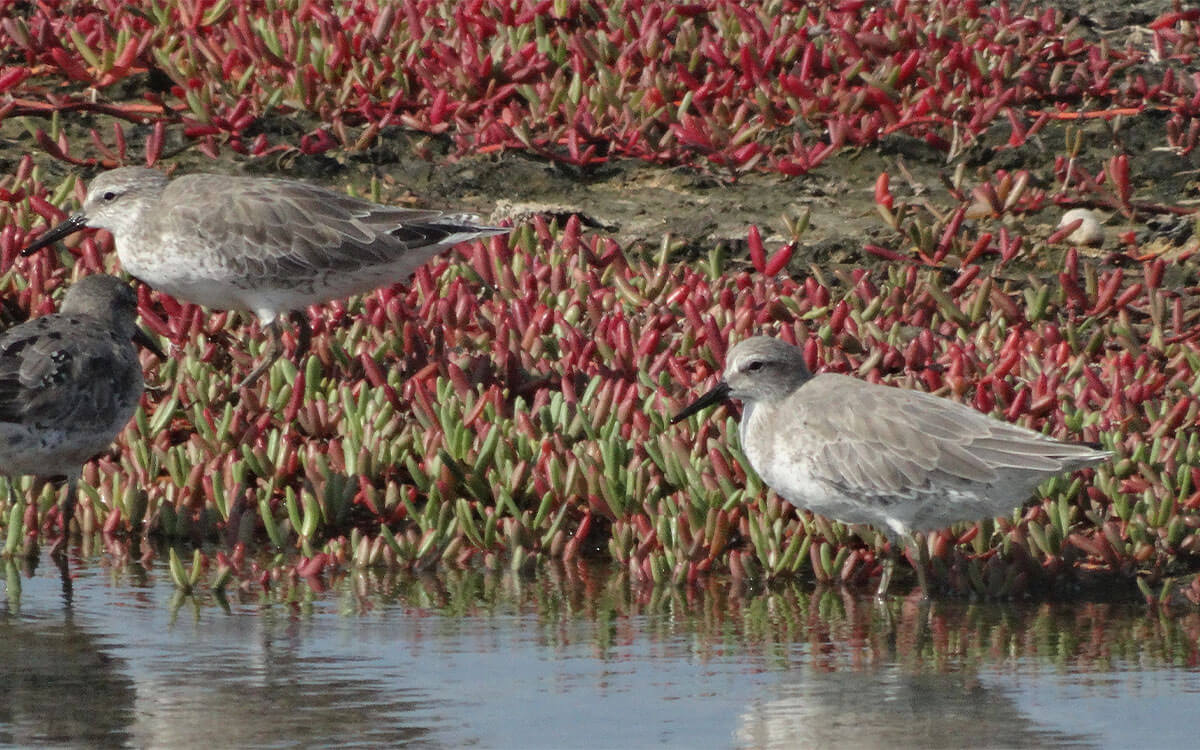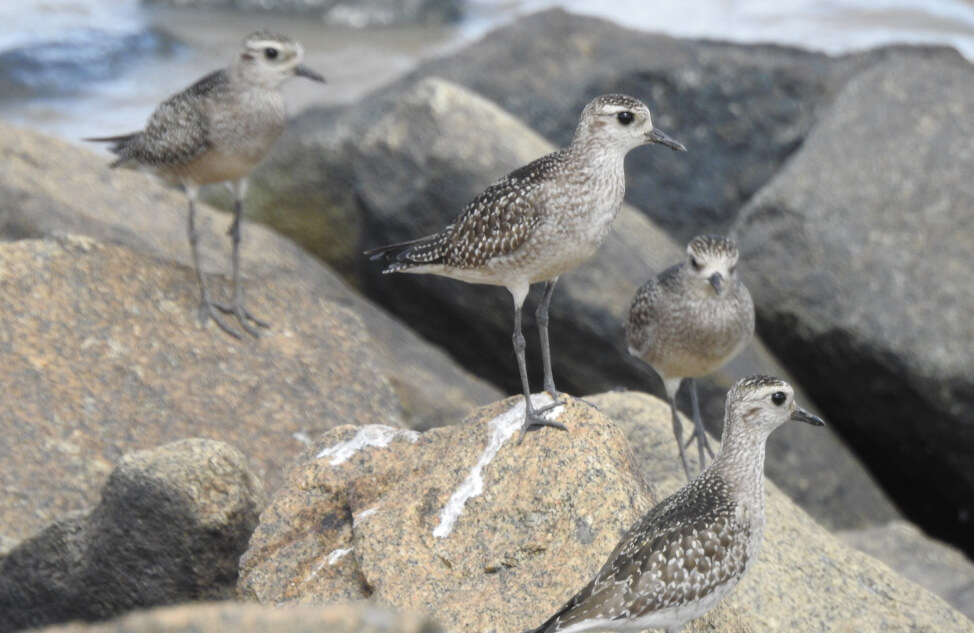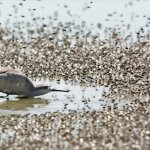Coastal habitats of Bonaire and Suriname are known to be important for shorebirds and both countries form part of the Western Hemisphere Shorebird Reserve Network (WHSRN). In Suriname, three sites, Bigi Pan, Coppename Monding Nature Reserve, and Wia Wia Nature Reserve were all designated as WHSRN Sites of Hemispheric Importance in 1989. They were designated primarily for their importance to Semipalmated Sandpiper (Calidris pusilla), but also for supporting hundreds of thousands of other migratory shorebirds during the non-breeding season. On Bonaire, the site Cargill Salt Ponds Bonaire was designated as a WHSRN Site of Regional Importance in 2018. Thanks to the efforts of BirdsCaribbean and the support of Cargill managers, surveys during the boreal winter since 2015 revealed that more than 20,000 shorebirds use this large wetland complex annually. Thus, the importance of both Bonaire and Suriname as wintering areas for migratory shorebirds is well documented; however, only limited data is available regarding the importance of these habitats during migration. To increase our knowledge and identify additional sites of importance, the WHSRN Executive Office in collaboration with local partners coordinated a series of surveys during August to October of 2023 .

Part of a 20,000+ flock of Semipalmated Sandpipers (Calidris pusilla) at Matapica Kreek, Suriname. Photo: Arne Lesterhuis
The surveys along the coast of Bonaire were organized and implemented by the company WILDCONSCIENCE, that works with governments and nature organizations to achieve their conservation goals through science and education, and were instrumental in aiding in the designation of Bonaire’s WHSNR site. Between August and October 2023, a total of 90 surveys were carried out at 18 sites along Bonaire’s coastline. A total of 20 Nearctic shorebird species were observed and over 25,000 shorebirds counted, however: this does not take into account possible counts of flocks that stayed on the island upon arrival. Fernando Simal, Co-managing director of WILDCONSCIENCE, comments: “We don’t know much about stopover times for shorebirds on Bonaire. My perception (right or wrong) is that the majority of the shorebirds we count are staying on the island for the season. If turnover was high, I think there would be a little more variation in numbers throughout the island. Yet, I’m only speculating about this and perhaps some proper observations could be made with increased survey efforts during migration.”
Most shorebirds during the surveys on Bonaire were counted at the Cargill Salt Ponds WHSRN site, confirming its importance for both migrating and wintering shorebirds on the island. Overall, the most commonly recorded species was the Semipalmated Sandpiper.
In Suriname, ground surveys were carried out during southbound migration in October 2023. The surveys were implemented in collaboration with students from the University of Suriname that have been in training with both WHSRN staff and local field guides. A total of eight sites were visited, including two of the WHSRN sites (Bigi Pan and Coppenamemonding) and some other well-known shorebirds sites like Weg naar Zee, Braamspunt and Warrapakreek. A total of 21 shorebird species were recorded, 19 of which are Nearctic migrants. The Semipalmated Sandpiper was the most abundant species, with more than 40,000 individuals counted, including a 20,000+ flock at the mouth of the Matapica creek. Two Marbled Godwits (Limosa fedoa) were a highlight as this species was not previously recorded in Suriname. However, the total numbers stand in stark contrast with the hundreds of thousands seen during surveys in the eighties and nineties. The steep shorebird declines observed along the Atlantic Coast of the U.S. and Canada also appear to be evident along the coast of Suriname.


Left: Red Knots (Calidris canutus) along the coast of Bonaire. Photo: WILDCONSCIENCE. Right: American Golden Plovers (Pluvialis dominica) on rocks at the Bigi Pan WHSRN Site. Photo: Arne Lesterhuis.
The migration surveys in both Bonaire and Suriname were supported by Dinamo Fonds, a donor from the Netherlands with an interest in supporting shorebird conservation. The main goal of these surveys was to increase our knowledge of the importance of these areas for migrating shorebirds in order to guide conservation action where required. This is critical because recently a new study published in the journal Ornithological Applications showed that since 1980, nearly all shorebird species along the Atlantic Coast of the U.S. and Canada have experienced steep declines, with many losing more than 50 percent of their population over the last three decades. Data for similar analysis south of the U.S. and Canada is scarce. Mainly due to a lack of resources and people power, regular shorebirds surveys during migration (August-November) are challenging and therefore most surveys have been focused on the winter period (January-February). With the support of Dinamo Fonds, Manomet hopes to be able to further increase survey efforts.
The WHSRN Executive Office will work towards continuing and expanding these surveys during the southbound migration in Bonaire and Suriname. In Bonaire, the focus should be on better understanding turnover rates to be able to estimate shorebird populations that migrate through the island on their way to wintering grounds further south. Whereas in Suriname, where capacity is still very low, it is important to train more people (i.e. students) in efficient survey methods and techniques in order to be able to expand coverage and increase the regularity of surveys during migration.
Cover Photo: Shorebird habitat at Weg naar Zee. Photo: Arne Lesterhuis.







